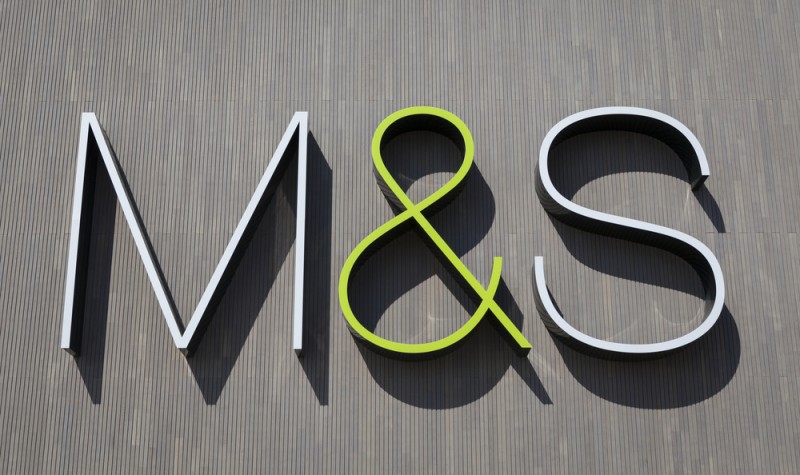Marks Sparks Back Into Life

Marks and Spencer at 507p, after the recent results for the six months to 26 September 2015. The encouraging features included better cash flow, further growth and progress in food, improving margins on general merchandising, and a telling 6.3% increase in the interim dividend.
As a man who was previously unwilling to throw Marks and Spencer (MKS) shares out with the bath water in an act of confused despair, I am understandably pleased to see that the interim results to 26th September 2015 had some solid financial attributes. Over a year the market was down 7.6%, as measured by the FTSE 100 Index but Marks and Spencer shares were up 8.5% (a tribute, no doubt, to this retailer not diversifying into minerals or hydro carbons).
The solid financial attributes to which I refer are a reported significant improvement in free cash flow before dividends and a rise in the interim dividend payout. The interim dividend was upped 6.3% to 6.8p which on the share price of 507p, last seen, is worth 1.3% on that single interim payment. Not a lot in absolute terms but useful in our fragile low inflation world where Bank of England interest rate rises have been postponed as an option, because of the less heartening outlook for the world economy.
The most noticeable problem for Marks and Spencer in commercial operational terms has been its inability to increase its topline sales revenue over a number of years, particularly in women’s ware and fashion, even though it has thrown a lot of effort and resources at it.
Generally, group sales revenue has hung about £10 billion for five years with increases being more of a small woman’s size six dress proportions. That is of course, quite small. Noticeably, there was no specific reference to the progress in women’s ware sales which were probably negatively affected by the unseasonal weather which occurred in the six months to September.
Overall, group sales were reported as increasing 1.4% to £5 billion over the half year, which is pretty consistent with the modest kind of top line revenue progress of recent times; so not a great advance there.
Basically and essentially, Marks and Spencer is a successful food retailer with a less successful and retarded general merchandising side. The logic of owning the shares being, that the food side will do well while, hopefully, general merchandising (most particularly the women’s clothing) goes through the slow progress of recovery. It is therefore good that in the six months under review, food sales rose 3.3% in absolute terms and 0.2% in ‘like for like’ terms; very good when you consider the really tough conditions elsewhere in food retailing. Marks claims it has a differential food offer which keeps it ahead of the crowd and the evidence is that it continues to works successfully. Over the six months, the group opened thirty two new ‘Simply Food’ outlets.
Returning to the general merchandising side of the business, the management reported a 1.2% decline in comparable, like for like sales. One should reasonably put those in the context of the seasonal problems mentioned above. More significantly, operating margins improved. In part that is attributed to more successful sourcing.
The other attractive and encouraging feature of these results was the progress in online sales and the settling in of the relatively new in-house web site. Over the six months, online sales rose by 34%. That is crucial progress and takes the business towards profitability as an important part of gaining more customers and decreasing the marginal costs of doing so. It has had the problems of creating its own Marks & Spencer website, but now those seem to be fading.
These latest results are on balance positive. As to immediate prospects, the market consensus estimates that the growth in earnings will be 8% next year compared with a 3% rise last year. That values the shares at 15.3 times next year’s forecast earnings estimated at 35.6p; and 13.5 times the following year’s consensus estimated earnings of 38p – up 7%. The dividend is forecast to increase 5.5% next year and 8% next year, which puts Marks & Spencer shares on prospective estimated dividend yields of 3.7% and 4.0%, giving this share relative income attraction, in a market where the dividends of some big payers are becoming less certain. It should be added, that the historic ‘earnings yield’ of Marks and Spencer is a decent 6.5% because of the high dividend cover. If the consensus is correct, the estimated prospective earnings yield is 7% for next year and near 7.5% for the year after.
In my view, the shares offer a sufficiently decent historic and prospective dividend income to make them a useful investment for an income portfolio. Recent surveys have shown consumer confidence to be positive in the UK and real incomes, thanks to low price inflation, are on the rise. Ahead, there is the prospect of a rise in the living wage, which we are told by the management is not a problem for Marks. There is also the specific hope and prospect that Marks will continue to improve margins over time.
Comments (0)